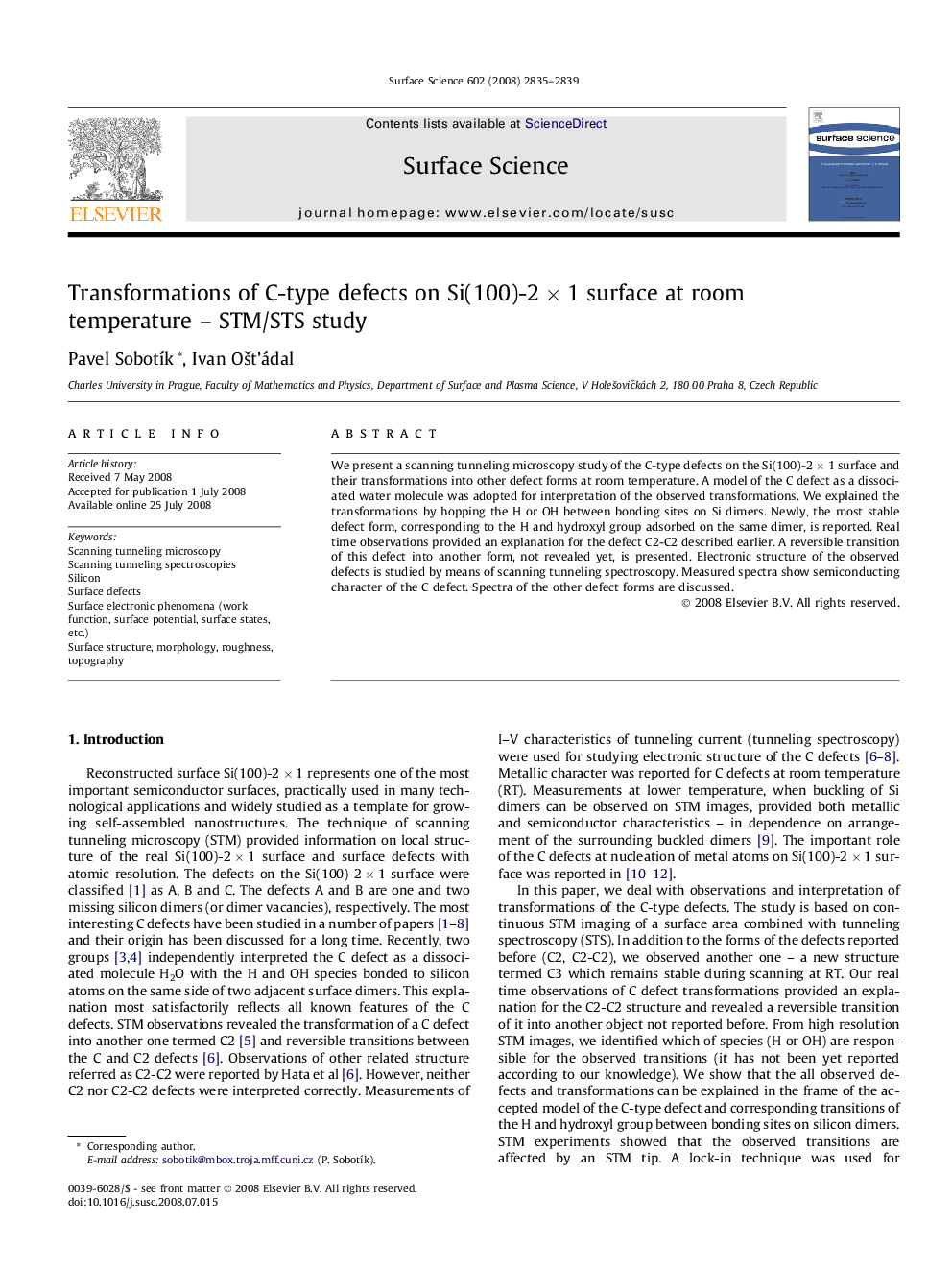| Article ID | Journal | Published Year | Pages | File Type |
|---|---|---|---|---|
| 5424889 | Surface Science | 2008 | 5 Pages |
Abstract
We present a scanning tunneling microscopy study of the C-type defects on the Si(100)-2Â ÃÂ 1 surface and their transformations into other defect forms at room temperature. A model of the C defect as a dissociated water molecule was adopted for interpretation of the observed transformations. We explained the transformations by hopping the H or OH between bonding sites on Si dimers. Newly, the most stable defect form, corresponding to the H and hydroxyl group adsorbed on the same dimer, is reported. Real time observations provided an explanation for the defect C2-C2 described earlier. A reversible transition of this defect into another form, not revealed yet, is presented. Electronic structure of the observed defects is studied by means of scanning tunneling spectroscopy. Measured spectra show semiconducting character of the C defect. Spectra of the other defect forms are discussed.
Keywords
Related Topics
Physical Sciences and Engineering
Chemistry
Physical and Theoretical Chemistry
Authors
Pavel SobotÃk, Ivan OÅ¡t'ádal,
